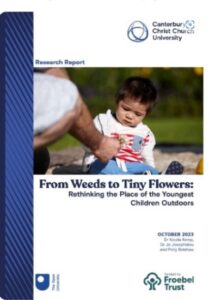In this thought-provoking post Dr Eleonora Teszenyi asks us to reflect on how children we support children in feeling they matter and they belong.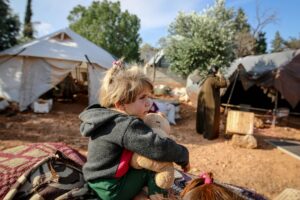
It is argued that children, like all humans, have an innate desire to feel important and to matter to others (Rosenberg and McCullogh, 1985). There is also compelling evidence to suggest that a sense of belonging is crucial to children’s participation in the activities of their groups and communities (Allen et al., 2023; Sykes and Teszenyi, 2018). Children who feel they belong and matter to others are happier, better adjusted, more engaged and are more motivated to learn (Alink et al., 2023; Korpershoek et al., 2020).
But are these concepts – belonging and mattering – the two sides of the same coin? How young children feel towards their groups and communities directly relates to a sense of belonging. So, we have here the feeling of belongingness and also belonging via participation. We know that love and belonging are one of the fundamentals in the hierarchy of human needs (Maslow, 1943). Those working in early education settings tend to recognise that most children strive for affectionate relationships and for a place in a group, which would suggest that belonging is important to their social lives.
On the other hand, mattering is defined as a ‘psychological tendency to perceive the self as significant to others’ (Marshall et al., 2010, p.367). How others feel towards children and their participation in their groups shows how much they matter to others: how they are seen, how others interact with them, how much they feel they are valued as a member of a group. Flett (2022) describes mattering by its three key characteristics: (i) attention, which refers to being noticed by others; (ii) importance, which is the feeling of being a concern of others; and (iii) dependence or reliance, which is the feeling that others can depend on us. Just as the sense of belonging yields positive outcomes, ‘mattering’ can also contribute to a greater sense of wellbeing, greater resilience and improved self-esteem. Are we to assume, then, that ‘mattering’ includes both the feeling of being valued by others and adding value to others’ lives?
How about these two counter-intuitive notions? One, that a child might have the feeling they matter, but their emotional investment towards their group is not reciprocated, therefore, they do not feel they belong. (Is there a darker side to belonging?) The other, that despite having a sense of belonging, children may still feel that they do not matter to their community.
Picture this:
3-year old Peter moves from the sand tray to the drawing table. With two of his peers he was loading a large bucket with stones but one of them impatiently took the spade out of his hand saying ”You are too slow, give it me!” He is now sitting at the drawing table with a sheet of paper in front of him, felt tip pen in his hand, drawing lines on the paper. David comes, wordlessly sits down, takes his sheet of A4 paper and begins to draw what looks like a large rectangle confidently. Peter lifts his head and observes David intently. After a short while, he asks: ”What are you drawing?” He receives no response. Peter continues to watch but does not ask again. After a little while he returns to his own drawing and carries on with his wiggly lines. Imogen comes along, sits down next to Peter and asks him: ”What are you drawing”? Peter does not answer immediately, he keeps his eyes on his paper. David, however, looks up, takes a look at Peter’s drawing and says: „It looks like a tractor.” Imogen says: ” It doesn’t.”, to which David responds: ”I don’t think so either but it is beautiful.” Peter’s head snaps up, looks surprised and a smile tugs at his lips.
How is Peter feeling as he is pushed out of playing with the stones? Does his contribution matter? Does he belong? How does this feeling change as David comments on his drawing? Is he valued? Why is this significant for Peter?
Another important question to consider is what practitioners can do to support children’s sense of belong and mattering in an Early Years setting. Establishing positive social and emotional environments can serve as the foundation for children and young people to develop a sense of belonging. Woven into the fabric of a supportive environment is a network of positive relationships, and relationship-rich pedagogies that underpin interactions with and between children. As we have seen in the extract above, patterns of relationships evolve as individuals come together in a group, make emotional connections and learn about how each member of a community might act or react in particular situations. Although relationships cannot single handedly deliver a sense of belonging or mattering, practitioners can create a caring learning environment that facilitates the development of empathy, care and respect towards one another, carving out space and places for intimacy, friendships, shared play, peer support …etc.
Adults themselves can actively contribute to the development of positive relationships by attuned listening, slowing down to pay attention to children’s messages and meaning making (Clark, 2023), and by engaging in interactions that are conducive to community building such as collaborations, shared project, co-operation and joint problem solving.
References:
Alink, K., Denessen, E., Veerman, G. and Severiens, S. (2023) Exploring the concept of school belonging: A study with expert ratings. Cogent Education, 10(2) 2235979 DOI:10.1080/2331186X.2023.2235979
Allen, K-A., Boyle, C., Wong, D., Johnson, R. G. and May, F. (2023) ‘School belonging as an essential component of positive psychology in schools’, in Giraldez-Hayes, A. and Burke, J. (eds.) Applied positive school psychology. London: Routledge, pp. 159-172.
Clark, A. (2023) Slow knowledge and the unhurried child. Abingdon: Routledge.
Flett, G. L. (2022) An introduction, review and conceptual analysis of mattering as an essential construct and essential way of life. Journal of Psychoeducational Assessment, 40(1), pp. 3-36.
Korpershoek, H., Canrinus, E. T., Fokkens-Bruinsma, M., and de Boer, H. (2020) ‘The relationships between school belonging and students’ motivational, social-emotional, behavioural, and academic outcomes in secondary education: a meta-analytic review’, Research Papers in Education, 35(6), pp. 641-680. Available at: https://doi.org/10.1080/02671522.2019.1615116
Marshall, S. K., Liu, Y., Wu, A., Berzonsky, M. and Adams, G. R. (2010) ‘Perceived mattering to parents and friends for university students: A longitudinal study’, Journal of Adolescence, 33, pp. 367-375. Available at: https://doi.org/10.1016/j.adolescence.2009.09.003
Maslow, A. H. (1943) A theory of human motivation. Psychological Review, 50(4), pp. 370-396.
Rosenberg, M. and McCullough, B. (1981) Mattering: Inferred significance and mental health among adolescents. Research in Community and Mental Health, 2, pp.163-182.
Sykes, G. and Teszenyi, E. (2018) (eds) Young children and their communities: Understanding collective social responsibility. Abingdon: Routledge


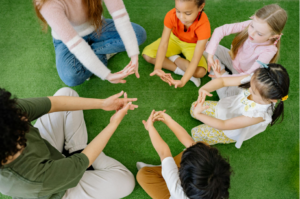
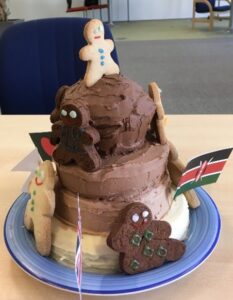
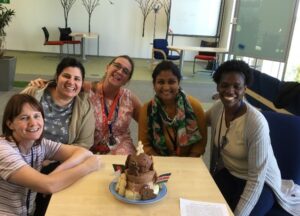

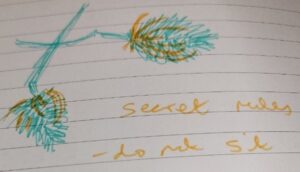
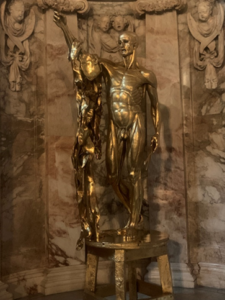 that it was just another gloomy albeit grand room, with a shiny statue. I loved the shock as I approached the statue and realised what it was. I was unaware of this story but was intrigued by it. The notes said to look for the secret door to the right of the statue, but I was unable to find this and found it another irritating example of keeping secrets and withholding information. I absolutely loved the sculpture because it seemed so transgressive and shocking. I also appreciated the pain of all humanity across the saint’s face. I don’t know a lot about Damian Hirst, apart from recognising his more famous pieces of work, but I loved the creativity, the humour almost in the saint having his skin draped over his arm – humour in the grotesque. I don’t appreciate the constraints of religion – thinking about my own childhood, so to have this disruption in the middle of the pomposity of an ornate chapel appealed to my sense of resistance and pushing back. I also appreciated the lovely symmetry of ideas of the skin as clothing with the upstairs exhibition and the draping of fabric; in fact, symmetry was an idea I seemed to focus on in many of the spaces.
that it was just another gloomy albeit grand room, with a shiny statue. I loved the shock as I approached the statue and realised what it was. I was unaware of this story but was intrigued by it. The notes said to look for the secret door to the right of the statue, but I was unable to find this and found it another irritating example of keeping secrets and withholding information. I absolutely loved the sculpture because it seemed so transgressive and shocking. I also appreciated the pain of all humanity across the saint’s face. I don’t know a lot about Damian Hirst, apart from recognising his more famous pieces of work, but I loved the creativity, the humour almost in the saint having his skin draped over his arm – humour in the grotesque. I don’t appreciate the constraints of religion – thinking about my own childhood, so to have this disruption in the middle of the pomposity of an ornate chapel appealed to my sense of resistance and pushing back. I also appreciated the lovely symmetry of ideas of the skin as clothing with the upstairs exhibition and the draping of fabric; in fact, symmetry was an idea I seemed to focus on in many of the spaces.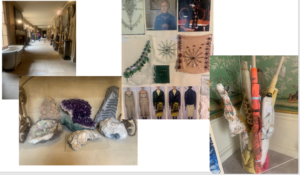
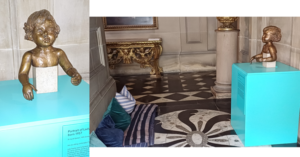
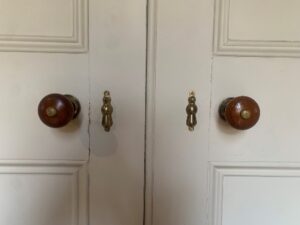 When I reflect back on my visit my immediate thoughts are about invisible boundaries. As I went around the house I took photos from a child’s-eye perspective, trying to see the contents and experience the spaces from their viewpoint. This meant that I had pictures of key holes, door stops, table legs and other random items. Towards the end of the visit a security guard approached me to ask if I had been taking pictures of door handles, what my photographs might be used for and generally finding out what I was doing. During the conversation I realised that actually, there could be a malevolent reason for taking these pictures, and I also realised that the staff in each room and corridor had been watching and raising concerns with the security team. When it became apparent that I wasn’t up to no good we had a great chat about the exhibition, the work that the Chatsworth education team do and I went on my way. But when I looked back at my photographs the incident coloured my recollections, I found myself thinking ‘should I have been looking at that’? Was I supposed to be in that space? Was I doing things ‘right’?
When I reflect back on my visit my immediate thoughts are about invisible boundaries. As I went around the house I took photos from a child’s-eye perspective, trying to see the contents and experience the spaces from their viewpoint. This meant that I had pictures of key holes, door stops, table legs and other random items. Towards the end of the visit a security guard approached me to ask if I had been taking pictures of door handles, what my photographs might be used for and generally finding out what I was doing. During the conversation I realised that actually, there could be a malevolent reason for taking these pictures, and I also realised that the staff in each room and corridor had been watching and raising concerns with the security team. When it became apparent that I wasn’t up to no good we had a great chat about the exhibition, the work that the Chatsworth education team do and I went on my way. But when I looked back at my photographs the incident coloured my recollections, I found myself thinking ‘should I have been looking at that’? Was I supposed to be in that space? Was I doing things ‘right’?
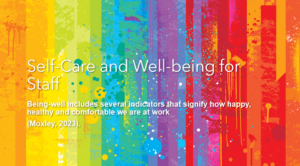
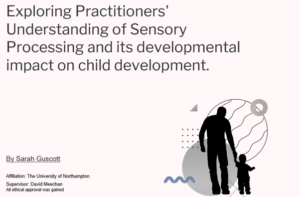
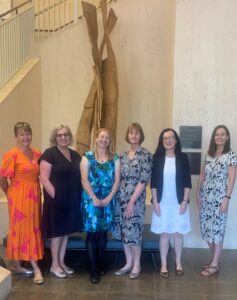 On June 26th 2024 Dr Natalie Canning presented her Empowerment Framework at a breakfast event held in the British Library in London. The organisations who attended the event neatly illustrated how ‘early childhood’ is an umbrella term, with representatives that work with babies, pregnant mothers, early childhood and care settings, and childminders as well as early childhood researchers, practitioners, policy influencers and members of the EC@OU team. The work being done by these groups reaches across the UK nations and beyond.
On June 26th 2024 Dr Natalie Canning presented her Empowerment Framework at a breakfast event held in the British Library in London. The organisations who attended the event neatly illustrated how ‘early childhood’ is an umbrella term, with representatives that work with babies, pregnant mothers, early childhood and care settings, and childminders as well as early childhood researchers, practitioners, policy influencers and members of the EC@OU team. The work being done by these groups reaches across the UK nations and beyond.
